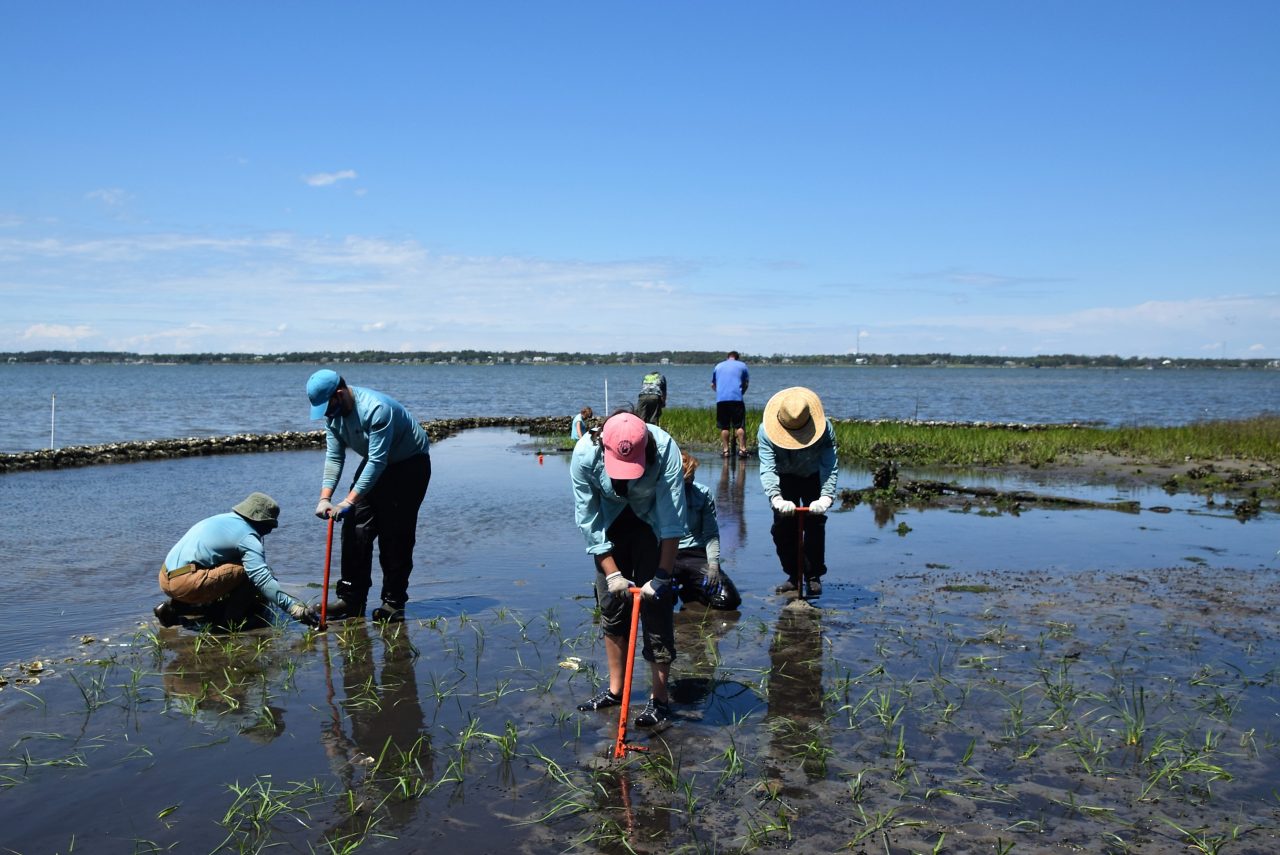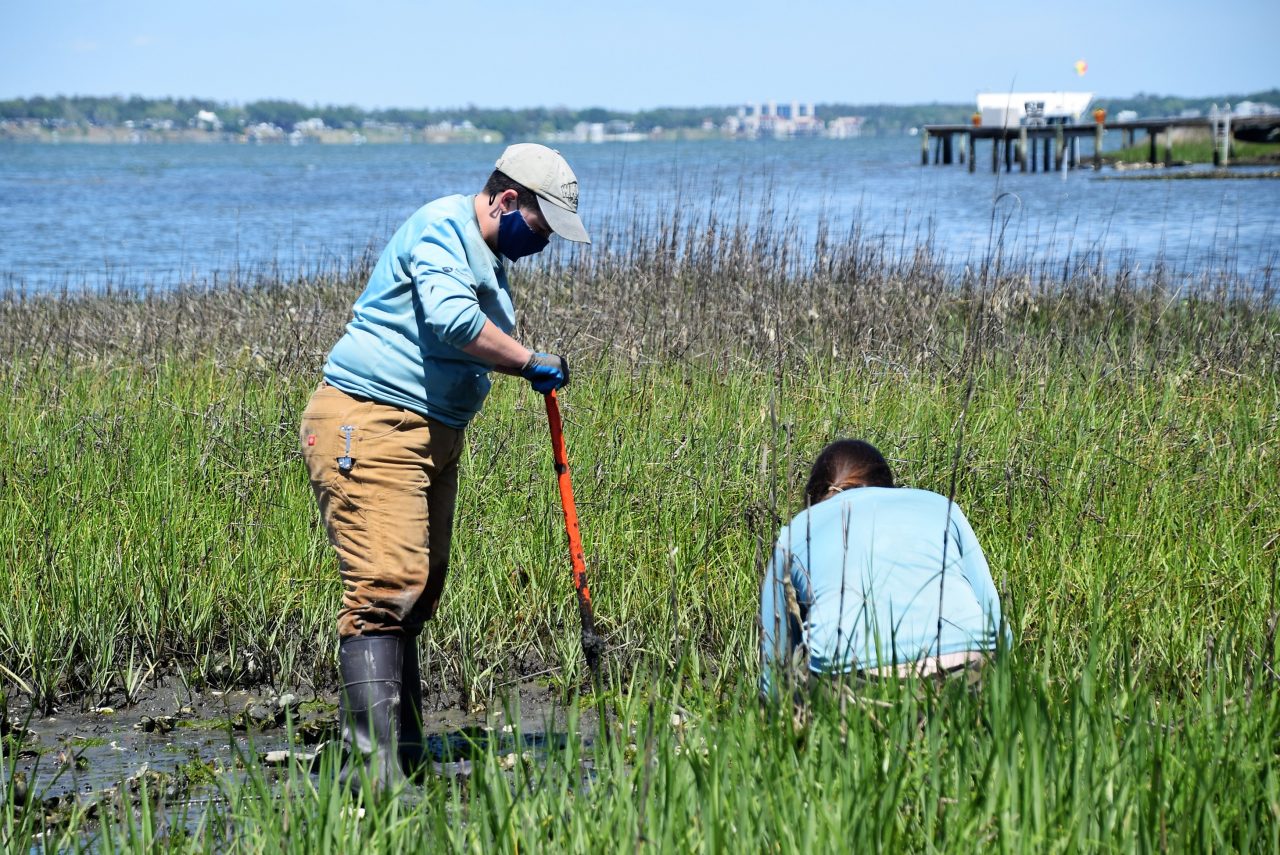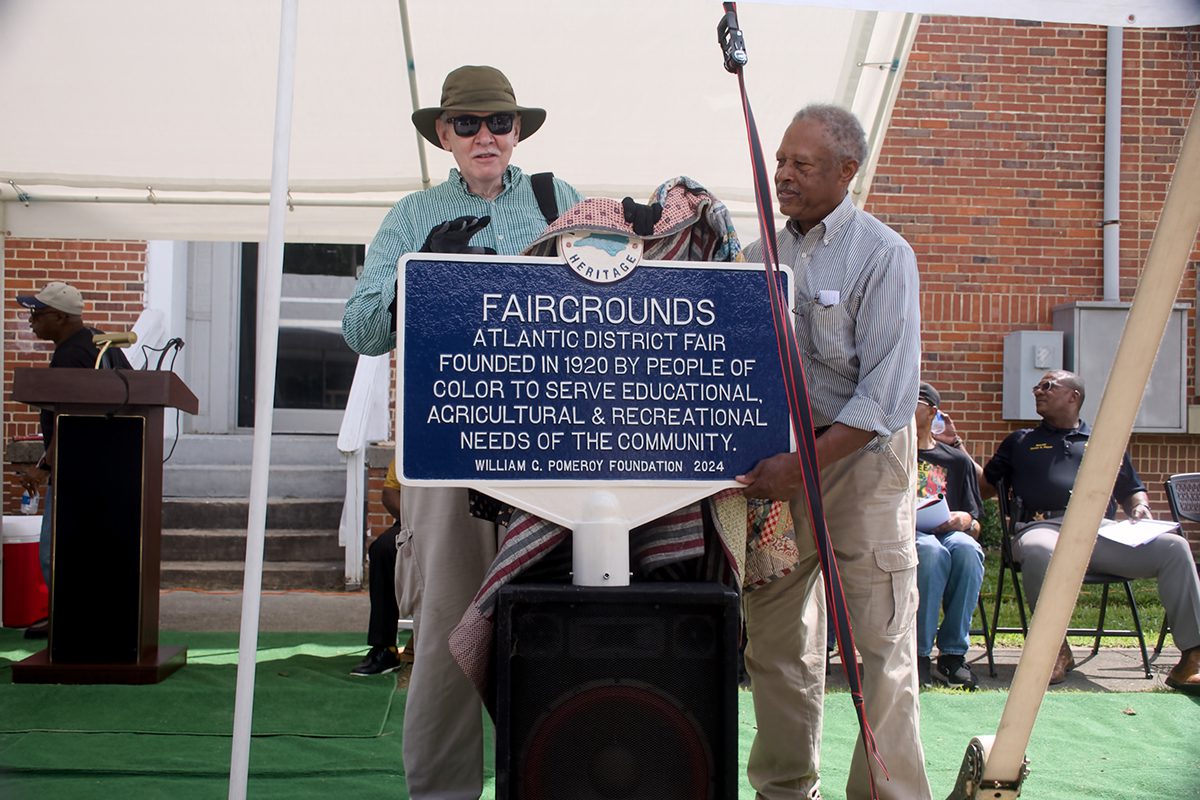
PINE KNOLL SHORES – About 3,000 salt marsh sea grass plugs were planted recently as part of a large-scale living shoreline project in Bogue Sound by town hall.
The project was one of a handful focused on coastal restoration and living shorelines tackled through a partnership between Conservation Corps North Carolina – the first of its kind for this group, according to one organizer — and the North Carolina Coastal Federation.
Supporter Spotlight
Conservation Corps N.C. engages ages 16-27 in conservation work and is a program of Conservation Legacy, a national organization dedicated to supporting locally based conservation service programs. AmeriCorps members serve on most Conservation Corps projects.
The six-person AmeriCorps crew, volunteers and federation staff planted the salt marsh grass, completing a restoration project put in place to reduce shoreline erosion, protect the area’s maritime forest from storms, provide fish habitat and help improve coastal water quality, according to the federation. The AmeriCorps crew also collected marine debris and did maintenance work at Cape Lookout National Seashore, Carolina Beach State Park, Morris Landing in Holly Ridge and other spots on the central and southern North Carolina coast.
The living shoreline was built with bags of recycled oyster shells placed along the shoreline by Restoration Systems LLC, an environmental restoration business based in Raleigh. The state Department of Justice’s Environmental Enhancement Grant program and the North Carolina Land and Water Fund funded that portion of the project.
Though there was a torrential downpour that morning and into early afternoon, the sky cleared by about 2 p.m. May 7, allowing enough time to plant the thousands of plugs.
AK Kelly, from Florida, was among the six-member crew planting salt marsh grass that day.
Supporter Spotlight
Kelly joined the Conservation Corps earlier this year, after deciding it was time to get back into the field, literally. Kelly earned a degree in environmental science focusing in conservation a few years ago, but after graduating, ended up in the service industry.
“I was just ready to get back into my field, ready to get back into stuff relevant to my degree,” Kelly said about choosing the organization. “Conservation Corps was a great opportunity for me to do that in a way where I’m going to very clearly build my skill set, get my confidence back, get to do a wide variety of work, and remember why I love what I love.”
Kelly continued that the conservation world is broad, and the Conservation Corps crew has been able to learn about different types of work and meet numerous people. It gives the opportunity to ask how people ended up in a certain area of conservation, what they studied and, “My key question: How often are you in your office?”

Conservation Corps Program Manager Jan Pender of Raleigh observed the sea grass planting work at the living shoreline that day.
She said Conservation Corps crews have worked in Croatan National Forest and performed habitat and trail work as well as facility maintenance for the North Carolina Coastal Land Trust on their preserves, including work on Gales Creek Preserve near the Croatan.
Pender said the work includes a lot of habitat restoration.
“We are a legacy of the Civilian Conservation Corps, so a lot of our public land work looks a lot like what they did,” she said. A part of the New Deal, the Civilian Conservation Corps was a volunteer public work relief program from 1933 to 1942 for unemployed, unmarried men in their late teens and early to mid-20s.
Living shorelines are “relatively new to natural resource management and so we really wanted to get our folks involved in it and educate people about it, especially because it does seem so important in North Carolina,” Pender continued. That’s why Conservation Corps approached Duke Energy Foundation for funding.
“There’s Corps all over the United States but as far as we know this is the first time a Corps has ever done living shoreline work. There’s always this thing about putting boots on the ground. Yeah, well, this is the first time we’ve had boots in the water,” she said.
Pender said the crews had a positive experience and learned a lot about sustainable environmental management.
“We just hope that we can be a conduit to getting more young people involved in this kind of work and getting more people aware of this (work),” Pender said, adding that the hope is that this will be a bigger part of the contribution the Conservation Corps can make to the state.
In a follow-up interview, Pender said the federation’s experience working with coastal communities to protect shorelines made the organization the ideal partner to pilot the nation’s first Conservation Corps living shoreline project.
“Because of their professional and dedicated staff, CCNC AmeriCorps members had a transformative education and community service experience. We are grateful to the Duke Energy Foundation for making this partnership possible,” she said.
Conservation Corps Director Michael Meredith gave a brief introduction inside town hall before the team of more than a dozen headed to the living shoreline. He said that Conservation Corps NC is much in the tradition of the Civilian Conservation Corps. “our little program stays in North Carolina. We work from the mountains to the sea.”
The crew working on the Pine Knoll Shores living shoreline is one of 15 crews working this year, Meredith said.
“This crew of six are serving 300 hours of service in our communities, and this group is dedicated to living shorelines work,” Meredith said. We have a lot of other crews around the state doing climate resiliency work, trail construction — you name it — in a wide variety of communities across the state, but we’re thrilled to have this crew here, focused on living shoreline work and this partnership with the Coastal Federation.”
Meredith explained later that afternoon while observing the sea grass planting that the partnership, along with the federation, included Cape Lookout and Cape Hatteras national seashores.
“Our role as Conservation Corps North Carolina is to steward these AmeriCorps volunteers to service opportunities in their communities,” Meredith explained. The AmeriCorps participants commit to volunteer hours and are given a living allowance during their service as well as additional education opportunities such as the AmeriCorps education award.
Conservation Corps North Carolina began as a program with Conservation Trust for North Carolina in 2017. It was just one crew at that time. Conservation Corps then grew a couple of crews. Meredith said that for a brief period the service organization was supported by the Vermont Youth Conservation Corps.
“We’ve been on our own for just two years now,” he said. “Our program is here to service the communities in North Carolina. And with Conservation Corps North Carolina, our goal is to get youth from North Carolina engaged with service and public lands and the public spaces are in their backyards.”
Charles Rocci, town clerk for Pine Knoll Shores, said that he has been working closely with Dr. Lexia Weaver, coastal scientist and manager for the federation’s central regional office, and other federation staff to get the living shoreline project underway.
“I think that the idea of the project came from our town’s value to keep the natural look of the Bogue Banks, and you can see that difference between our towns and a lot of other towns,” Rocci said.
The federation has been working with the town for at least five years on stormwater retrofit projects to reduce polluted stormwater runoff entering into Bogue Sound.
Weaver said that the town recently approached the federation about installing a living shoreline on its property, which had severe erosion from Hurricane Florence in 2018.
“The living shoreline is going to help prevent additional erosion that’s occurring at the shoreline and it’ll provide habitat for fish and crabs and at the same time help improve water quality,” she said, adding it’s a better approach than bulkheads or sea walls.
“Our goal is to get more and more of these projects in the water, rather than bulkheads,” Weaver said.







